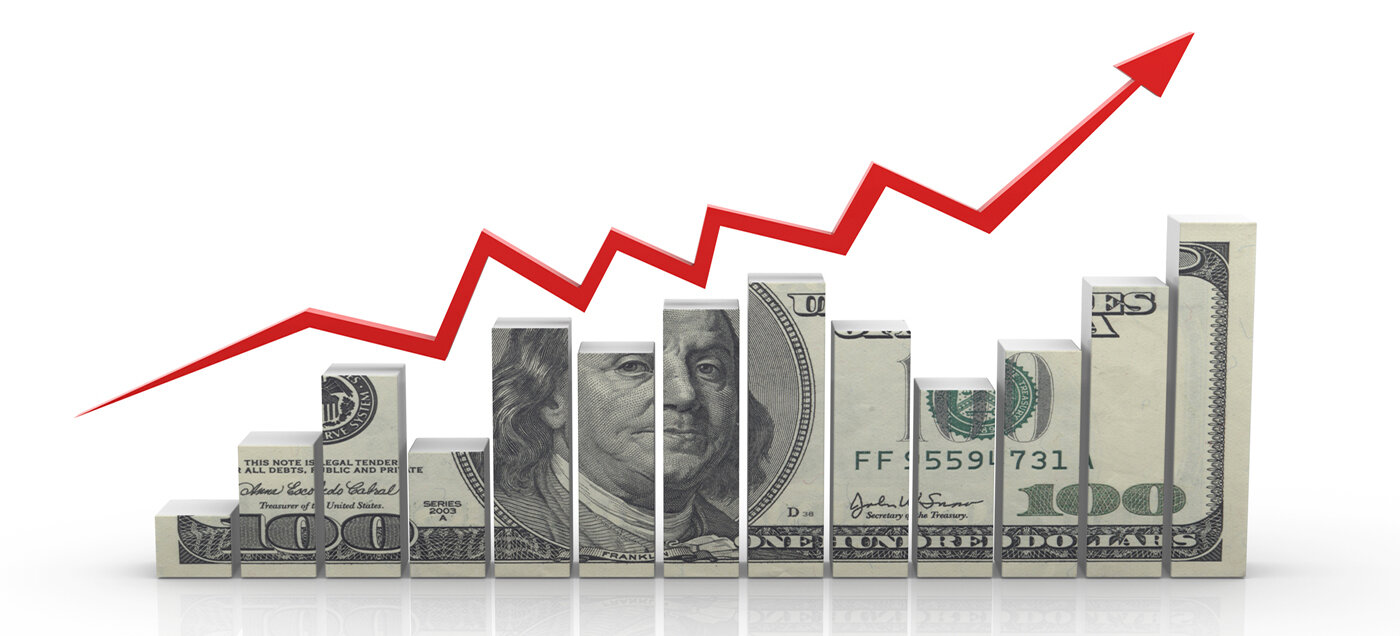Residential Real Estate News

Homes Still Enjoyed Price Gains in 90 Percent of U.S. in Q4
Residential News » Washington D.C. Edition | By Michael Gerrity | February 13, 2023 9:02 AM ET
According to the National Association of Realtors latest quarterly report, approximately nine out of 10 U.S. metro markets registered home price gains in the fourth quarter of 2022 despite mortgage rates eclipsing 7 percent. Eighteen percent of the 186 tracked metro areas registered double-digit price increases over the same time period, down from 46% in the third quarter of 2022.
Compared to a year ago, the national median single-family existing-home price rose 4.0% to $378,700. Year-over-year price appreciation decelerated when compared to the previous quarter's 8.6%.

"A slowdown in home prices is underway and welcomed, particularly as the typical home price has risen 42% in the past three years," NAR Chief Economist Lawrence Yun said, noting these cost increases have far surpassed wage increases and consumer price inflation of 15% and 14%, respectively, since 2019. "Far fewer metro markets experienced double-digit price gains in the latest quarter."
Among the major U.S. regions, the South saw the largest share of single-family existing-home sales (45%) in the third quarter, with year-over-year price appreciation of 4.9%. Prices grew 5.3% in the Northeast, 4.0% in the Midwest, and 2.6% in the West.
"Even with a projected reduction in home sales this year, prices are expected to remain stable in the vast majority of the markets due to extremely limited supply," Yun added. "Moreover, there are signs that buyers are returning as mortgage rates decline, even with inventory levels near historic lows."
The top 10 metro areas with the largest year-over-year price increases all recorded gains of at least 14.5%, with seven of those markets in Florida and the Carolinas. Those include Farmington, N.M. (20.3%); North Port-Sarasota-Bradenton, Fla. (19.5%); Naples-Immokalee-Marco Island, Fla. (17.2%); Greensboro-High Point, N.C. (17.0%); Myrtle Beach-Conway-North Myrtle Beach, S.C.-N.C. (16.2%); Oshkosh-Neenah, WI (16.0%); Winston-Salem, N.C. (15.7%); El Paso, Texas (15.2%); Punta Gorda, Fla. (15.2%); and Deltona-Daytona Beach-Ormond Beach, Fla. (14.5%).
Half of the top 10 most expensive markets in the U.S. were in California, including San Jose-Sunnyvale-Santa Clara, Calif. ($1,577,500; -5.8%); San Francisco-Oakland-Hayward, Calif. ($1,230,000; -6.1%); Anaheim-Santa Ana-Irvine, Calif. ($1,132,000; -1.6%); Urban Honolulu, Hawaii ($1,090,200; 3.4%); San Diego-Carlsbad, Calif. ($857,000; 1.4%); Los Angeles-Long Beach-Glendale, Calif. ($829,100; -1.3%); Naples-Immokalee-Marco Island, Fla. ($802,500; 17.2%); Boulder, Colo. ($759,500; -2.0%); Seattle-Tacoma-Bellevue, Wash. ($708,900; 1.3%); and Barnstable Town, Mass. ($668,100; 4.0%).
Roughly one in 10 markets (11%; 20 of 186) experienced home price declines in the fourth quarter of 2022.
"A few markets may see double-digit price drops, especially some of the more expensive parts of the country which have also seen weaker employment and higher instances of residents moving to other areas," Yun added.
In the fourth quarter of 2022, housing affordability was exacerbated by elevated home prices and mortgage rates which roughly doubled from the beginning of the year. The monthly mortgage payment on a typical existing single-family home with a 20% down payment was $1,969. This represents a 7% increase from the third quarter of last year ($1,838) but a major surge of 58% - or $720 - from one year ago. Families typically spent 26.2% of their income on mortgage payments, up from 25% in the prior quarter and 17.5% one year ago.
Once again, first-time buyers looking to purchase a typical home during the fourth quarter of 2022 encountered challenges related to housing's growing unaffordability. For a typical starter home valued at $321,900 with a 10% down payment loan, the monthly mortgage payment rose to $1,931, about 7% more than the previous quarter ($1,806) and an increase of almost $700, or 57%, from one year ago ($1,233). First-time buyers typically spent 39.5% of their family income on mortgage payments, up from 37.8% in the previous quarter. A mortgage is considered unaffordable if the monthly payment (principal and interest) amounts to more than 25% of the family's income.
A family needed a qualifying income of at least $100,000 to afford a 10% down payment mortgage in 71 markets, up from 59 in the prior quarter. Yet, a family needed a qualifying income of less than $50,000 to afford a home in 16 markets, down from 17 in the previous quarter.
Sign Up Free | The WPJ Weekly Newsletter
Relevant real estate news.
Actionable market intelligence.
Right to your inbox every week.
Real Estate Listings Showcase
Related News Stories
Residential Real Estate Headlines
- Las Vegas Area Home Prices Uptick 4.3 Percent Annually in March
- Single-Family Rent Growth in U.S. Trends Upward in 2025
- U.S. Mortgage Rates Tick Down Post Trump Tariffs Commencement
- President Trump's 'Liberation Day' Tariffs Potential Impact on the U.S. Housing and Mortgage Markets
- Baby Boomers Biggest Cohort of U.S. Home Buyers in 2025 as Millennials Decline
- U.S. Monthly Housing Payments Hit Record High in 2025
- U.S. Pending Home Sales Uptick in February
- Global Prime Residential Rent Slowdown Continued in Late 2024
- Ireland Home Price Inflation Hits 8 Year High in Early 2025
- Existing Home Sales in America Uptick in February
- Great Miami Area Residential Sales Decline 15 Percent Annually in February
- Mortgage Rates Uptick in Mid-March, Ending 9-Week Decline in U.S.
- World Property Ventures Builds the Future of Real Estate with New Funding Round
- U.S. Builder Sentiment Declines Amid Economic Uncertainty and Rising Costs
- Black Homeownership Rates in U.S. Enjoy Largest Annual Increase of All Racial Groups
- Wealthy Renters Are Taking Over More of the U.S. Rental Market
- If U.S. Congress Does Not Extend NFIP Soon, Thousands of Daily Home Closings Impacted
- U.S. Mortgage Applications Spike 11 Percent in Early March
- Greater Palm Beach Area Residential Sales Rise in Early 2025
- New Apartments in U.S. Are Leasing at Slowest Pace on Record
- U.S. Mortgage Rates Drop to 4 Month Low in March
- Overall U.S. Mortgage Delinquency Rates Dip in December
- New Tariffs on Canada, Mexico to Impact U.S. Homebuilder Input Costs
- Monaco's Property Market: A Tale of Two Cities
- U.S. Home Purchase Cancellations Surge, 1 in 7 Sales Getting Canceled
- U.S. Pending Home Sales Hit Historic Low in Early 2025
- Greater Miami Area Residential Sales Dip in January
- Governor DeSantis Supports Ending Property Taxes in Florida
- WPV Aims to Become the Berkshire Hathaway of Real Estate Tech
- U.S. Home Sales Slump Continues in January
- Average Americans Spend 38 Percent of Monthly Income on Mortgage Payments
- Switzerland's Safe-Haven Appeal Grows with World's Wealthy Homebuyers
- U.S. Builder Confidence Rapidly Declines in February
- Las Vegas Home Sales Rise 6.7 Percent Annually in January, Condo Sales Dip
- Homebuyer Demand in America Drops to 5-Year Low in Early 2025
- Ownership More Affordable Than Renting in Most U.S. Markets
- The World's First Global Listings Service Launches, Called a GLS
- Home Prices Continue to Rise in 89 Percent of U.S. Metros in Late 2024
- Global Luxury Residential Prices Showed Gradual Improvement in Late 2024
- U.S. Construction Hiring Rate Drops to Lowest Levels in 5 Years





